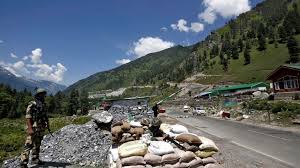In a significant diplomatic development, China’s Foreign Ministry spokesman Lin Jian has confirms pact with India, following close communication through diplomatic and military channels. The announcement comes just a day after India’s External Affairs Minister Subrahmanyam Jaishankar revealed the deal’s existence, particularly regarding military patrols along the contentious frontier. While the specific details remain somewhat unclear, China has expressed “positive approval” for the solution reached between the two nuclear-armed neighbors.
Border Tensions and Historical Context
The agreement addresses tensions along the Line of Actual Control (LAC), an unofficial division spanning approximately 3,488km through the Himalayas. This border has been a source of conflict since the 1962 war, when Chinese troops crossed the frontier during a dispute over demarcation, resulting in China retaining control of Aksai Chin. More recently, the 2020 clashes in Ladakh’s western Himalayas resulted in casualties on both sides, leading to a significant military buildup and subsequent withdrawal of tens of thousands of troops from the region.
China Confirms Pact with India and its Diplomatic Implications
The timing of this confirmation is particularly significant as both nations’ leaders prepare to attend the BRICS summit in Kazan, Russia. The possibility of a meeting between Indian Prime Minister Narendra Modi and Chinese President Xi Jinping on the summit’s sidelines has generated considerable interest, though Chinese officials have remained noncommittal about confirming such talks.
The agreement represents a potential shift in the relationship between the world’s two most populous nations, which has been strained since the deadly 2020 confrontation. Following those clashes, both sides agreed to stop sending patrols into a narrow strip surrounding the LAC, creating a buffer zone to prevent further incidents. The new agreement appears to build on these earlier arrangements, though the exact scope of the new pact remains to be clarified.
The territorial dispute extends beyond the immediate border area, with China claiming India’s eastern state of Arunachal Pradesh in its entirety, considering it part of Tibet. This longstanding disagreement has complicated relations between the two Asian powers, making any progress on border issues particularly significant.
Minister Jaishankar’s statement suggests the agreement aims to restore the peace and tranquility that existed along the border before 2020. This indicates a potential return to more stable relations, though the implementation of the agreement will be crucial in determining its effectiveness.
The Chinese Foreign Ministry’s commitment to working with India to implement the agreement suggests a willingness to move forward constructively. However, the lack of specific details about the agreement’s scope and implementation mechanisms leaves room for cautious interpretation of its potential impact.
The international community watches closely as these two major powers work to resolve their differences, particularly given their significant roles in global economics and politics. The success of this agreement could have far-reaching implications for regional stability and international relations in Asia.
As China confirms pact with India, the agreement represents a potential turning point in their complex bilateral relationship. While the immediate focus is on border management, the broader implications for regional stability and international relations will depend on the successful implementation of this understanding and the continued commitment of both nations to diplomatic solutions.
Related News
‘1. India Lodges Strong Protest as China’s Controversial Map Claims Indian Border Territory
















